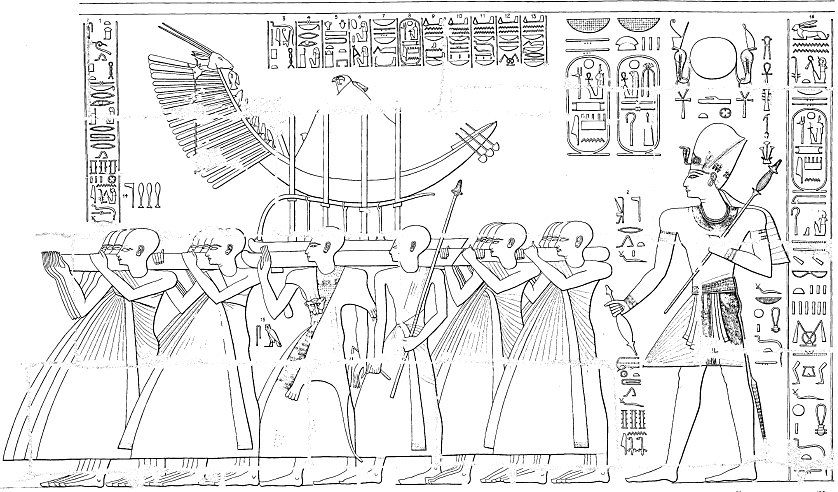Festivals for god Sokar are known as early as from the epoch of the Early Kingdom. The centre of his worship was located in Memphis, where Sokar was initially venerated as patron of craftsmen, and later as a chtonic deity connected to the district of the necropolis. Besides, Sokar was identified with Ptah and Osiris, and he is mentioned not rarely in texts as Ptah-Sokar-Osiris. In the epoch of the New Kingdom, his cult took a prominent place in the Egyptian religion, that was manifested in building a number of constructions for that god. The festival of Sokar was an integral part of the Osirisn festivities of the month of Khoiak; they reproduced various steps of the resurrection of Osiris killed by Seth. The time of those festivities happened at the beginning of the field works; that is why the aim of the rituals was in stimulating the forces of the soil and enhancing its fertility.
According to the calendar of Ramesses III from Medinet Habu (XX dynasty), the festival of Sokar took place on the 26 day of Khoiak. On its eve, 25 of Khoiak, during the night of ‘festival of two goddesses’ (ntryt), Egyptians made necklaces of five onions and put them on their necks. Those five onions were associated with the teeth of Osiris or Horus and had a link to the rite of ‘opening of the mouth’ which was to revive the five senses of a dead person. People with bunches of onions followed the barque-hennu of Sokar in the ritual circumambulation the temple walls. The ceremony performed the solar path and served for magical protection from the evil forces. Beside that circumambulation, the worshippers, perhaps, visited the district of the necropolis, where they made offerings of the deceased. Later, the procession was heading to the ‘Tent of purification’ (ibw), where funeral rites were held. One of the initial rituals of the Osirian festivities — ‘plowing the soil’ (xbz-tA) — was connected to the festival of Sokar. It meant the release of life forces of Osiris hidden in the soil in the form of seeds. In that case, Sokar, as a god of dead soil, played the role of mediator between the death and the new birth of Osiris. Festivals of the month of Khoiak were finished on the 30th day, when the ritual of setting the djed column was fulfilled — it symbolized the complete resurrection of Osiris.
 Ramesses III accompanies the barque of Sokar in the procession
Ramesses III accompanies the barque of Sokar in the procession
(Medinet Habu 1940, pl. 223)
Bibliography
-
Gaballa G.A., Kitchen R. The Festival of Sokar // Orientalia. 1969. Vol. 38. P. 1–76.
-
Graindorge C. Les Oignons de Sokar // Revue d'Égyptologie. 1992. Vol. 43. P. 87–105.
-
Medinet Habu. Festival Scenes of Ramses III / Eds. J.A. Wilson, T.G. Allen. Vol. IV (OIP, 51). Chicago, 1940.
Mikhail L.B. The Festival of Sokar. An Episode of the Osirisn Khoiak Festival // GM. 82. 1984. P. 25–44.
Tags: Ancient Egypt, Alexandra V. Mironova, Articles, Festivals

 English (United Kingdom)
English (United Kingdom)  Russian (Russia)
Russian (Russia)